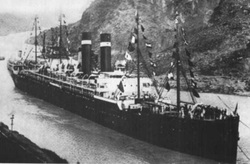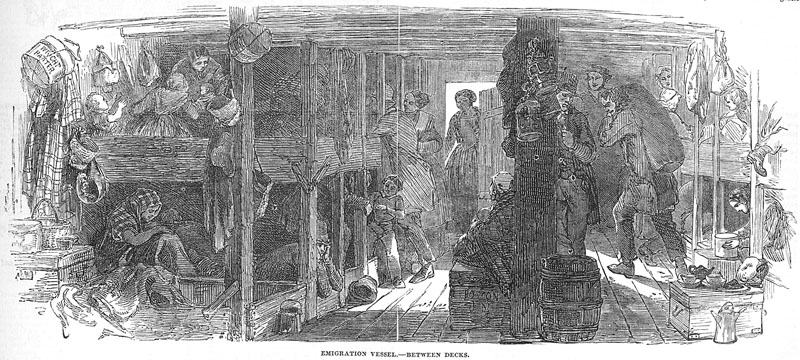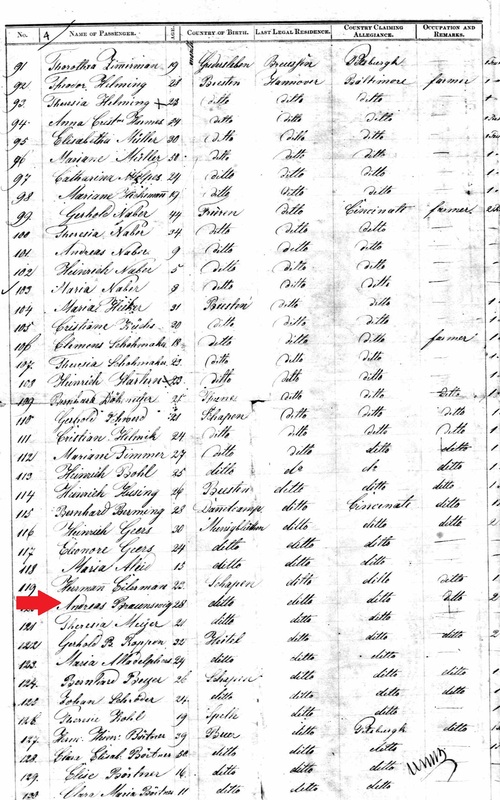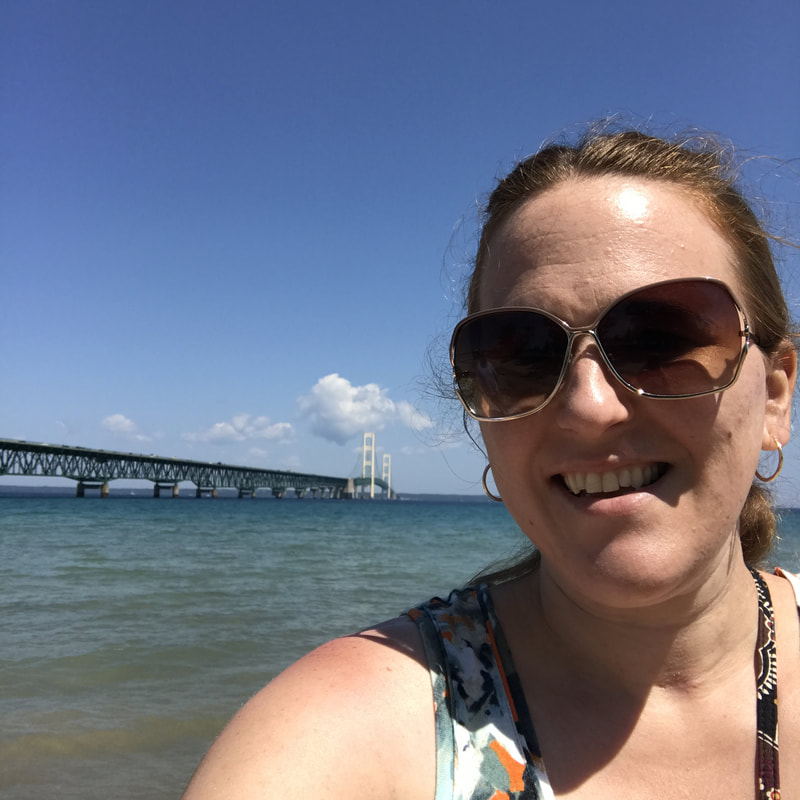 SS Finland, Antwerp-New York, 1902-1927
SS Finland, Antwerp-New York, 1902-1927 Tony's ancestors came to America in the 19th century, mostly from 1830 to the mid-1850s. Many of them were farmers from small villages in northeastern France (Alsace-Lorraine) and northwestern Germany, but there were a few tradesmen (blacksmiths, coopers, etc.) that made the journey as well. At this time, the Trans-Atlantic journey took an average of about seven weeks, but it could take upwards of 2-3 months depending on weather conditions and steering currents. The following exerpt describes how two of my husband's ancestral families came to the U.S from France:
"The Grill(i)ots (in 1838) and Aubrys (in 1840) traveled to the United States on American sailing ships. Usually these packet ships carried cargo, perhaps bales of cotton, on the voyage from America to France. For the return trip, the empty holds were transformed into a semblance of living quarters for the emigrants. Shelves arranged around the walls, three tiers high, served as berths. Each family was assigned an appropriate space that some managed to curtain off for a bit of privacy. They went up on deck for exercise, fresh air, and to prepare food on cook stoves." Source: http://www.wmcnitt.net/aubry/emigrati.htm
In 1855, Congress enacted a Passenger Act as an attempt to improve conditions for immigrants heading to America. It included provisions to limit the number of passengers per size of ship, increase the height of living quarters to at least 6 ft (it was usually 5.5 ft or less prior to this), provide adequate food, water, and ventilation, maintain a "quarantine" area for the sick and wash areas for all passengers, and provide some discipline to passengers who broke simple laws (theft was a large problem). There were fines if these provisions were not upheld; however, most historians agree that the law was not regularly enforced and the fines were not large enough to get every ship captain to adhere to the provisions.
It was about this time that the first steamships started making Trans-Atlantic voyages. By the mid-1870s, dozens of steamships were regularly carrying immigrants from Europe to America. While conditions onboard these ships were still cramped and unhygienic (for lower class passengers), the length of the trips was signifcantly less: About 5-7 days from English/Irish ports and no more than 2 weeks from ports in central and southern Europe.
My ancestors came to America between the 1890s and 1921, so they did have much shorter journeys. However, they also had to go through more red tape once they arrived at port, which included more thorough medical inspections, grouping procedures, and obtaining legal paperwork. Another post for another day, though :) I also intend to write about WHAT may have driven our ancestors to leave their homes and make a long, difficult, and dangerous journey halfway around the world to start new lives.
Finding Ship Manifests
residence, place to which he is going, occupation, and pieces of baggage. Once in America, he used name "Andrew Brunswick." It was fairly common for immigrants to anglicize their name, so keep that in mind when doing your own searching.
©2012, copyright Emily Kowalski Schroeder
Ship Manifest Source Citation: National Archives and Records Administration (NARA), Washington, DC; Records of the US Customs Service, RG36, Series: M255, Roll: 9
Source Information: Ancestry.com. Baltimore, Passenger Lists, 1820-1948 and 1954-1957 [database on-line]. Provo, UT, USA: Ancestry.com Operations Inc, 2006.



